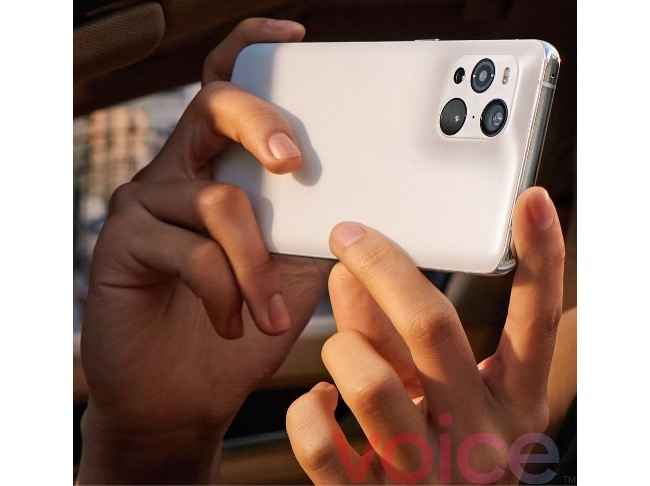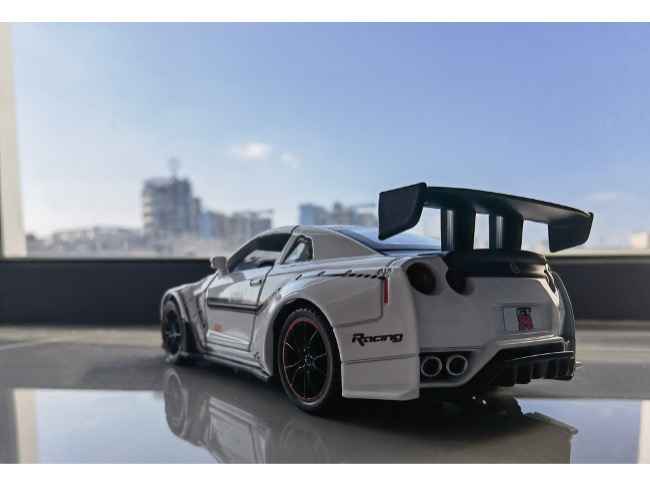The Poco M3 is more than just its premium looks. It offers much more for an affordable price point including excellent battery life, decent performance, 6GB RAM, a crisp FHD+ display, and a stereo speaker setup. It is a great option to consider under 15K, especially for users that are scouring the market for a smartphone not only performs well but also looks great.
Since Poco’s split from Xiaomi, the company has been diversifying their smartphone portfolio to a great extent with launches such as the M2, M2 Pro and the X3, all of which did pretty well in the Indian market. The company now has yet another entrant in the budget segment, the Poco M3, the successor to the popular M2. Equipped with a massive 6,000mAh battery, stereo speakers, and a spanking FHD+ display, the Poco M3 shares a few similarities with the Redmi 9 Power, however, it does differentiate itself due to its striking design. Additionally, Indian users would be happy to know that the smartphone gets 6GB of RAM in contrast to the 4GB global variant. Are these reasons enough to herald the Poco M3 as one of the best phones under the sought-after 15K price point? Let’s find out.
Poco M3: Key specifications CPU: Qualcomm Snapdragon 662 GPU: Qualcomm Adreno 610 RAM: 6GB Storage: UFS 2.1 64GB / UFS 2.2 128GB, expandable up to 512GB via microSD card Rear cameras: 48MP + 2MP + 2MP Selfie camera: 8MP Display size: 6.53-inch Display Type: IPS LCD Display resolution: Full HD+ (2340x1080) OS: Android 10, MIUI 12 Battery: 6000mAh with 18W Fast Charging Dual SIM: Yes Poco M3: Build and design
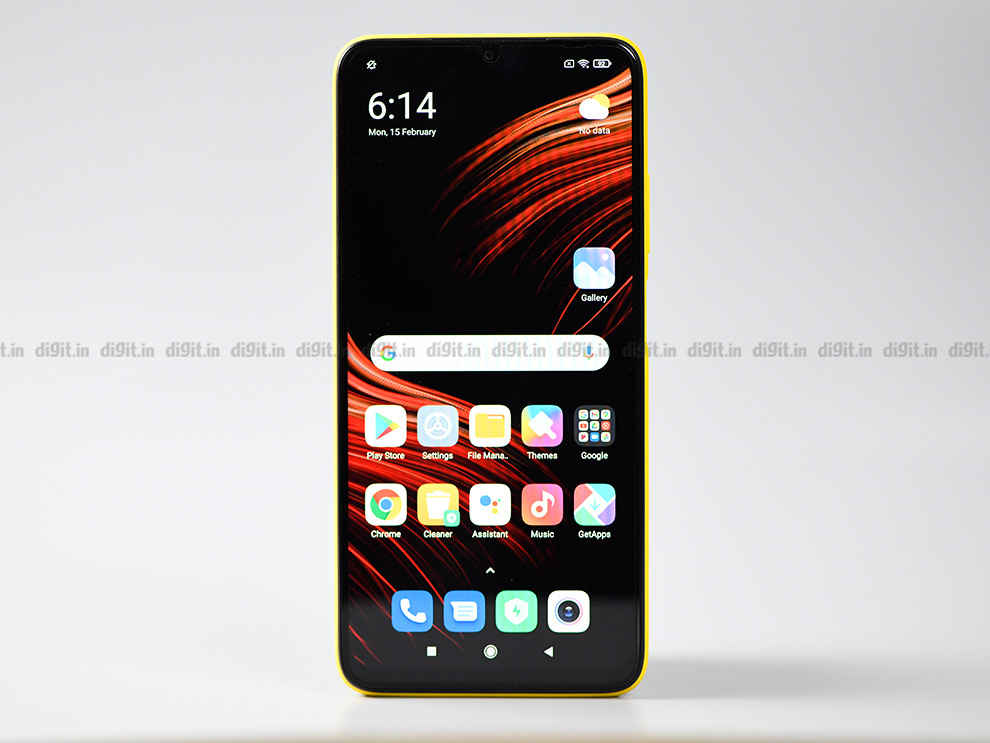
The Poco M3 is no doubt one of the best looking phones within this price range. The phone’s textured back panel looks gorgeous, especially in the yellow-coloured variant we got for review. It certainly turned more than a few heads. The phone is available in three colours including Poco Yellow, Cool Blue and Power Black. Even though the back panel is made out of plastic, it feels and looks extremely premium. The back also houses a rectangular glossy module that incorporates the rear cameras and the Poco branding. The contrast between the glossy texture of this module and the leather-like textured back is, yet again, aesthetically pleasing. The textured back also keeps fingerprints at bay and makes it easier to grip the phone. The same cannot be said for the glossy black cutout which does pick up fingerprints easily.
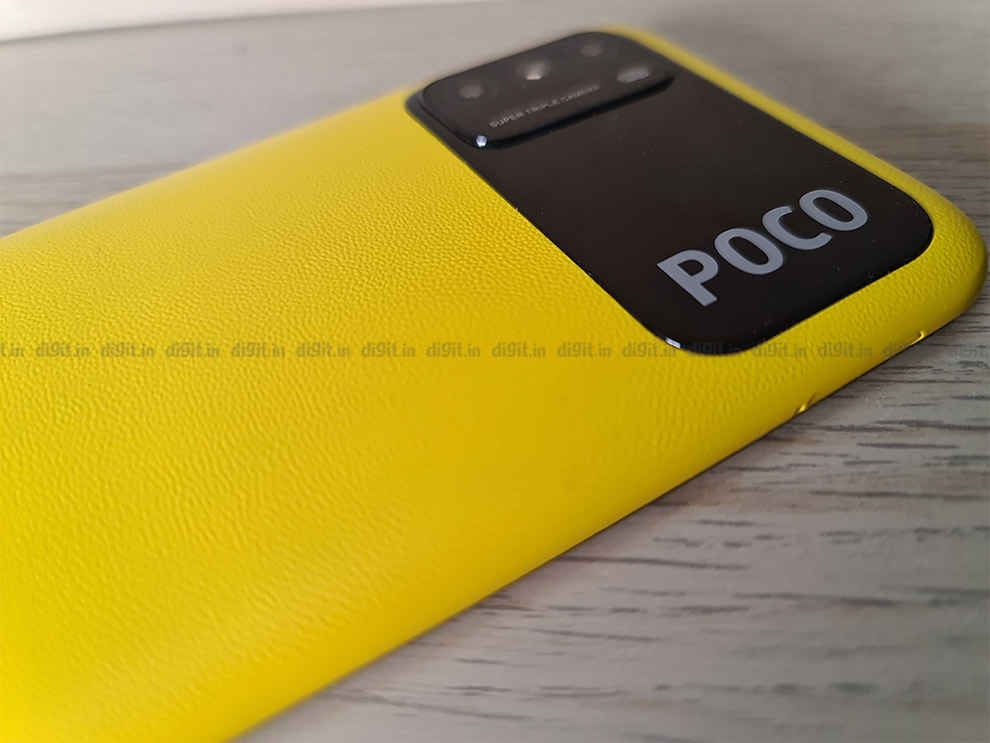
The cameras sit almost flush with the glossy black cutout, so there’s very minimal wobble when the phone lies flat on a surface. Weighing 198g, the phone is slightly bulky but the weight of the phone seems to be well-distributed across the body. On the right side, you have the volume buttons and the power button that are well-positioned and easy to reach. They also have pretty good tactile feedback with decent travel. The power button also doubles as a fingerprint scanner that throughout our testing period was responsive and speedy. No complaints there.
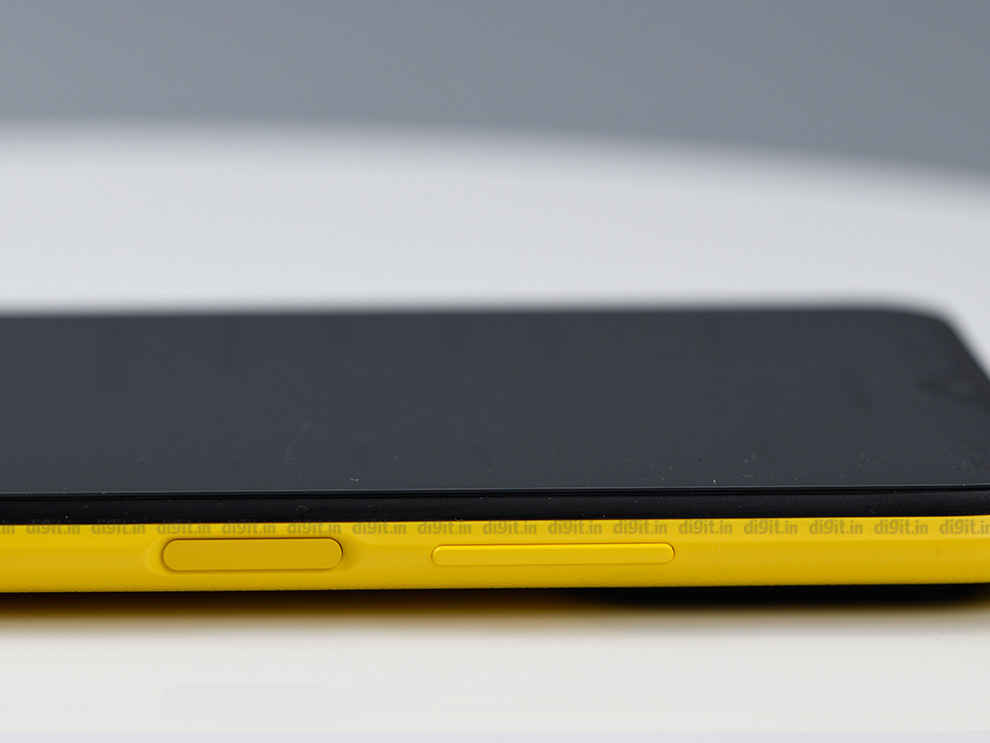
On the left side, you have the SIM tray that can house two NANO SIMs and a microSD card for up to 512GB of expandable storage. The phone comes in 64GB and 128GB storage variants, so even if you do get the base 64GB model at Rs 10,999, you can always bump that up significantly should you need to. At the bottom of the phone, you have the USB-C charging port, a microphone and a speaker. At the top, there’s a 3.5mm audio jack, an IR blaster, and… yet another speaker.
So, you get a dual stereo speaker setup with the Poco M3 which is excellent for this price point. We also saw the Redmi 9 Power incorporate stereo speakers and it’s an alluring feature that we’re glad companies are adding to their budget offerings. We watched a decent amount of content on Netflix and YouTube on the Poco M3 and found the speakers to be relatively loud, although the bottom one is definitely the speaker that’s pulling most of the weight. Still, the inclusion of a secondary top-firing speaker does bump up the immersiveness when watching content or gaming. The speakers also don’t crack too much even when at maximum volume.
On the front, the selfie camera resides in a dewdrop-shaped notch. You also have the option within the Settings menu to get rid of the notch altogether if it does bother you, which is a nice option to have. The bezels on the phone are pretty thick, but acceptable at around 10K. Inside the box, you get a basic silicone case for the phone and a 22.5W charging adapter, which is a tad curious since the phone only supports 18W Fast Charging. This is yet again something we saw on the Redmi 9 Power, so the phones have a fair share of similarities.
Poco M3: Performance
The Poco M3 is powered by the Qualcomm Snapdragon 662 SoC which is a common processor in this price range. This is coupled with the Qualcomm Adreno 610 GPU and 6GB of LPDDR4X RAM, in contrast to the 4GB of RAM in the global Poco M3 variant. You also have 64GB of UFS 2.1 storage or 128GB of UFS 2.2 storage. We got the base 64GB variant for review which is priced at Rs 10,999 while the 128GB one is priced at Rs 11,999. After performing our usual benchmarking tests, we saw that the Poco M3’s performance, at least when it comes to benchmarks, is slightly underwhelming in this price range.
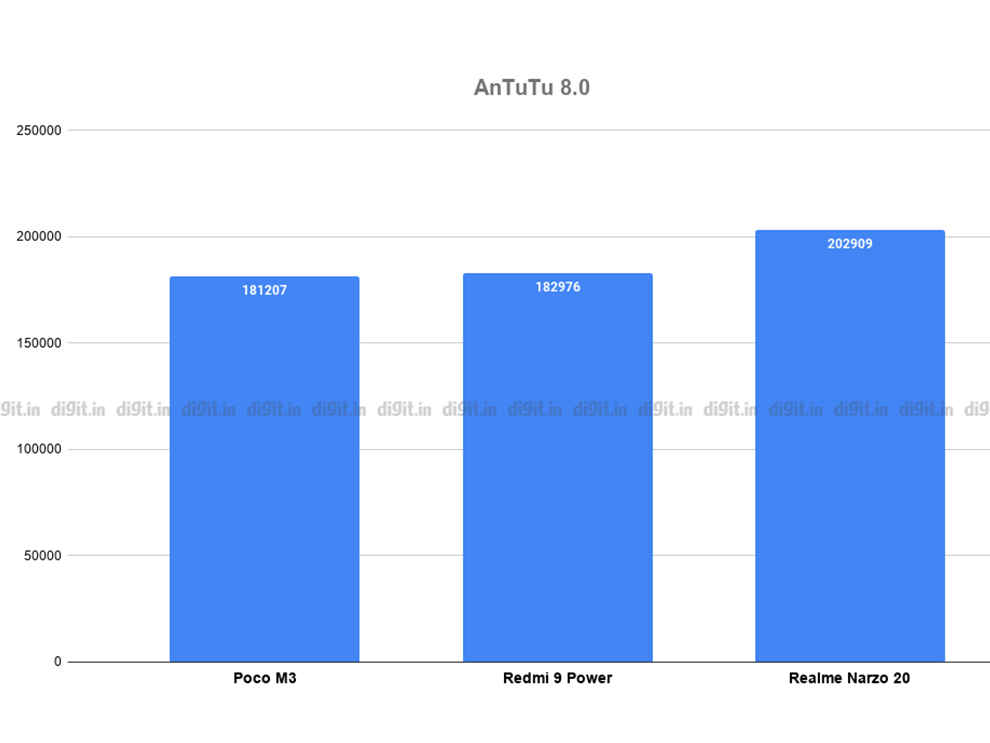
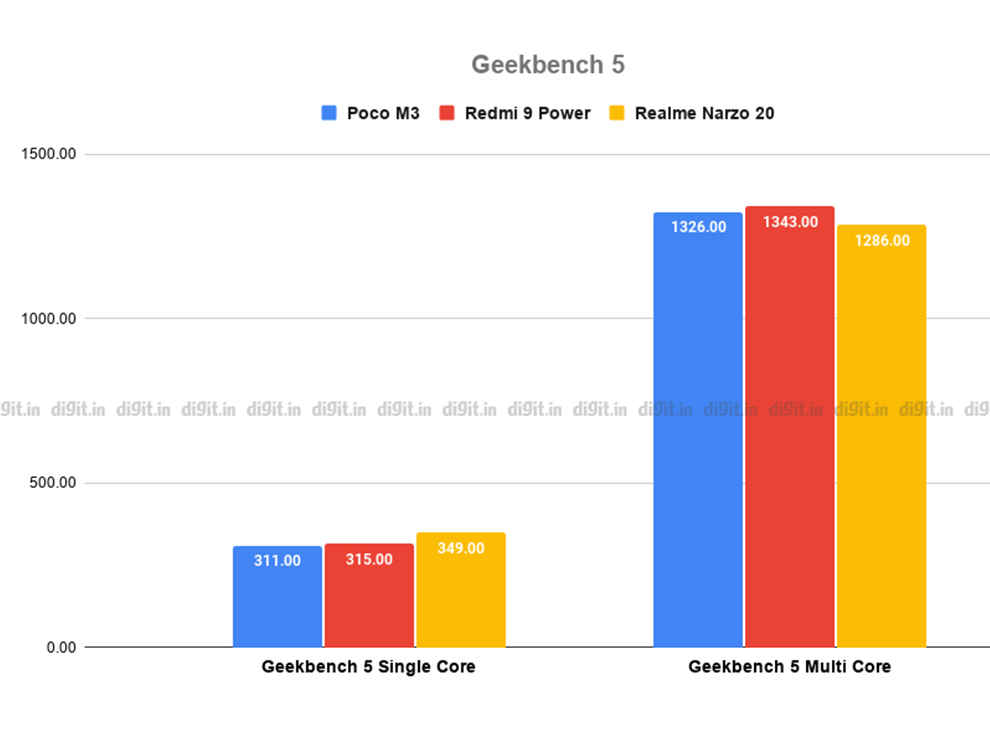
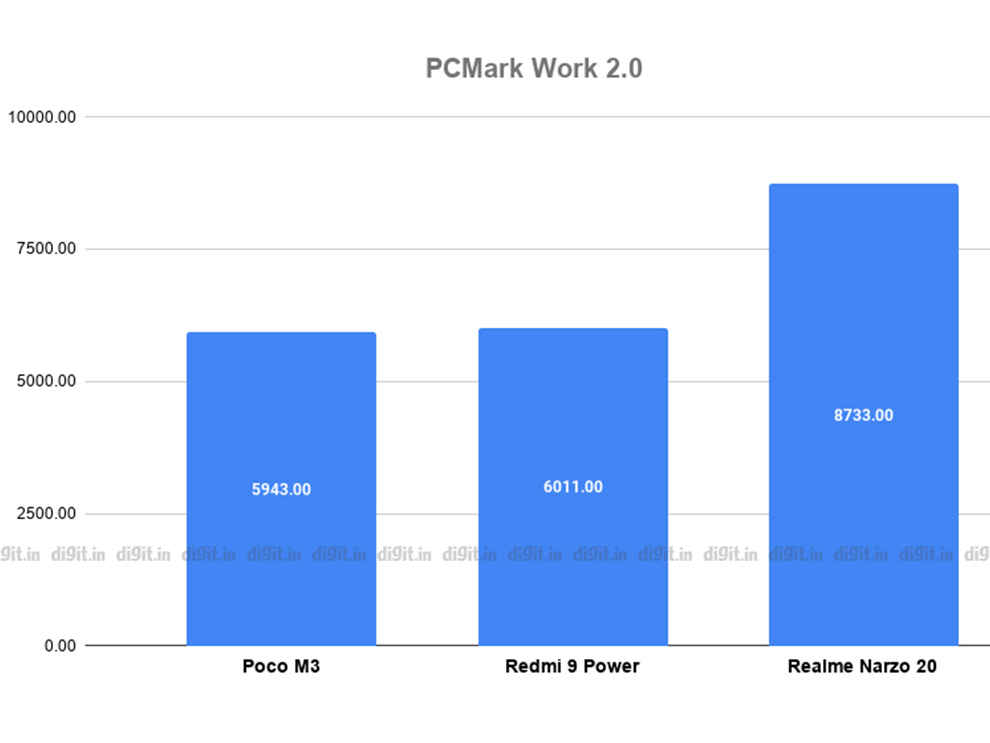
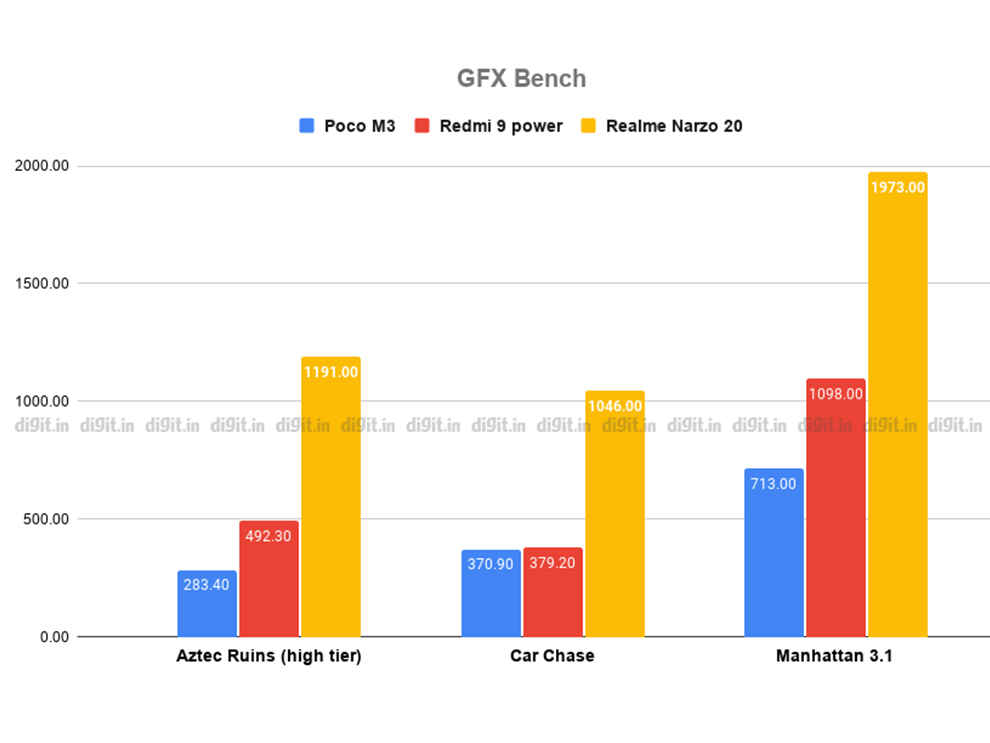
The device scored lower than both the Realme Narzo 20 and Redmi 9 Power in AnTuTu 8.0, albeit the 9 Power beat it by a hair's breadth. In the Geekbench 5 Single-Core test, the Poco M3 scored lower than the Narzo 20 and Redmi 9 Power yet again, however, in Multi-Core, it did beat the Narzo 20 while still lagging behind the 9 Power. In PCMark Work 2.0, the M3 yet again was beaten by the Redmi 9 Power and even more convincingly by the Narzo 20. Moving onto GPU performance in benchmarks, the Poco M3 lagged behind the Redmi 9 Power and was obliterated by the Narzo 20 that scored almost 4 times as much as the Poco M3 in GFX Bench's Aztec Ruins. However, benchmarks don't always tell the full story.
In real-world usage, the Poco M3 rarely falters for its price point. The phone accomplishes multitasking much better than the Redmi 9 Power due to the extra 2GB of RAM. There is some stutter and lag when scrolling through screens and opening up different apps, but they’re few and far in between. App opening time was decent for the most part too. It's safe to say, if you're using the phone to text, message, email, browse through social media and consume OTT content, the phone performs admirably for the price. In fact, the Poco M3 is also pretty decent for gaming.
We played Call of Duty: Mobile on the smartphone and the phone defaulted to High graphics and Medium frame rate. Under these settings, we recorded an average FPS of 48 with 74 per cent stability on Gamebench. If you drop the graphics down to medium from high, the numbers jump up to 51 fps with 94 per cent stability which is much better than the Redmi 9 Power's performance. The phone did get pretty warm during our COD sessions though and recorded a battery drop of 4 per cent in 15 minutes.
Moving on to software, the Poco M3 comes with MIUI 12 on top of Android 10 with the Poco launcher. While it is similar to MIUI on Xiaomi devices, the Poco M3 is supposed to be free of ads. We did not encounter any ads during our usage, much to our relief, since the Redmi 9 Power that we are in the process of reviewing is full of ads. Persistent and annoying ad notifications, which thankfully were completely absent here. What was present, however, was bloatware. The M3 comes with a fair number of preinstalled apps including GetApps, Netflix, LinkedIn, Facebook, some Mi apps, and even a few games. Thankfully, most of these apps can be uninstalled. Overall, the UI is decent, a bit too cluttered for our liking, but that's MIUI for you.
Poco M3: Display
The Poco M3 is one of the few smartphones at approximately the 10K price point to sport a Full HD+ display. The Redmi 9 Power also offers an FHD+ display, which is yet another similarity between the two powerhouse budget phones. The Poco M3 comes with a 6.53-inch IPS LCD display with Corning Gorilla Glass 3 for protection. The company has also included a preinstalled screen guard, which is a nice touch.
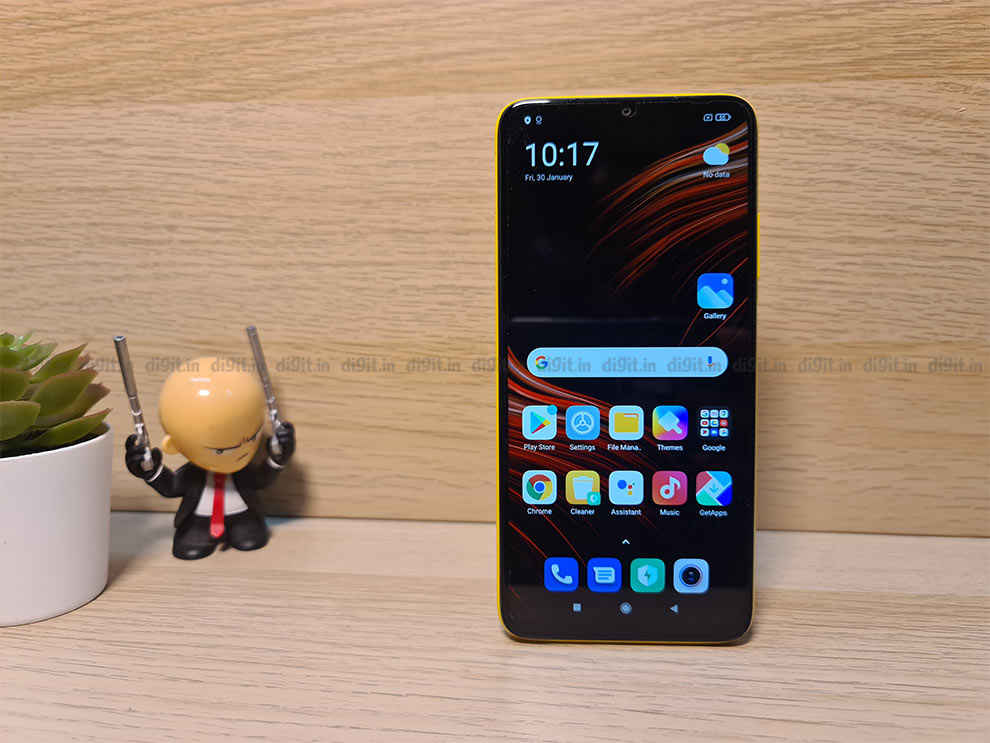
The display on the Poco M3 is one of the better ones at this price range with vibrant colours and decent viewing angles. Things look slightly more saturated than normal but that’s common in many smartphone displays. The display is bright for indoors usage rated at 400 nits of peak brightness. Although, we measured the peak brightness to go up to 212 nits. In bright sunlight, the Poco M3 has some issues under direct sunlight but the display was slightly more readable than the Redmi 9 Power when using it outdoors.
The phone also comes with WideVine L1 support, so you can stream HD content on OTT platforms such as Netflix, right out of the box. This combined with the stereo speaker setup makes for a device that is plenty immersive when watching content, although the dewdrop notch is slightly distracted. We would have preferred a punch-hole cutout, but given the price, we couldn’t really ask for more.
Poco M3: Battery life
The Poco M3 comes packing a massive 6,000mAh battery that supports 18W Fast Charging. It is slowly but surely becoming mainstream for companies to make ‘Power’ smartphones in the sub-12K budget segment, and we’re all for it. The Poco M3’s battery life is more than enough to even last heavy users approximately 2 days. We unplugged the phone at 9 AM in the morning and went through a whole day of streaming content, playing COD: Mobile and Asphalt 9, clicking pictures and shooting videos, and by 10 PM at night, the phone was still sitting at a solid 46 per cent battery remaining.
The phone comes with a 22.5W charging adapter, although the phone tops out at 18W Fast Charging. The charger brought the device from an empty battery all the way up to full in 2 hours and 50 minutes, which is pretty slow. Nevertheless, you won’t have to worry about charging your device that often, especially if you’re a light user. In our tests, half an hour of streaming Netflix content in HD dropped the battery by 6 per cent and an hour of GPS navigation took it down by another 6 per cent.
You can even use the Poco M3 as an external power bank to charge your other USB-C devices. The phone comes with reverse wired charging, that connects the Poco M3 to another device with a USB-C to USB-C cable and can be used to charge it. It isn’t very fast at charging other devices, but should work to provide other phones a few extra percentage points of battery life, or even better charge smaller devices such as TWS earbuds.
Poco M3: Camera performance
The Poco M3 comes with a triple rear camera setup consisting of a 48MP primary lens with an f/1.8 aperture, a 2MP macro camera with an f/2.4 aperture, and a 2MP depth camera, also with an f/2.4 aperture. There's a glaring omission, which is an ultrawide lens that is available in competitors such as the Realme Narzo 20 and Redmi 9 Power. For selfies, you get an 8MP shooter. Check out some of the camera samples below. Do note that these images have been resized for the web. If you want to view the full quality images, head over to our Flickr Gallery.
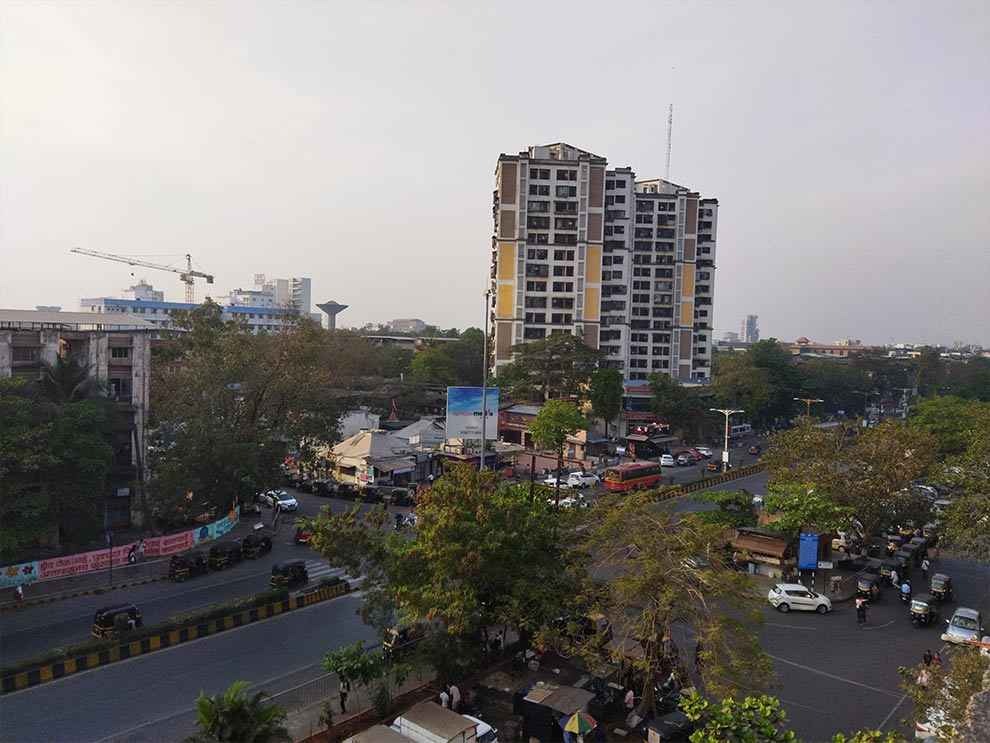



Daylight photos taken from the main camera turned out pretty well. The dynamic range was passable for the most part, although the shadows lacked details for the most part. Turning HDR on definitely helped in this context. The phone was able to extract more information from the shadows with HDR on. Close-ups shots look good with some nice natural background blur, except the device constantly struggles to lock focus, which is aggravating. There's also a Pro colour mode that brings a pop of colour to pictures but looks cartoonish in some cases.

Macro lens struggles to focus due to lack of auto focus
The focus locking problem is heightened even further when using macro mode since there’s no auto-focus. It's extremely hard to get the camera to focus on the subject in macro mode and even when you do, the shots from the 2MP lens are lacklustre in quality.
Portrait shots had pretty decent edge detection, however, the blur did look unnatural and choppy in some shots. Selfies taken on the 8MP camera are average. The camera softens the picture a tad too much for our liking though. Portrait selfies have good edge detection but suffer from the same softening effect. This is even more heightened in low light selfies and there's plenty of noise in most of these shots as well.

Moving on to the low light performance, the primary rear camera performs mediocrely in low light. There is plenty of noise in the shots and the phone struggles even more to lock focus. Night mode makes low light imaging slightly better, there's more detail and light in the images but the focusing problems persist.
For video recording, the phone tops out at 1080p for the main camera and selfie shooter. Video quality is decent enough for the price but there's no stabilisation so videos suffer from shake especially if you're walking or generally have a shaky hand. The Poco M3 also has the option for slow-mo recording at 720p at 120fps.
Verdict
The Poco M3 is more than just its premium looks. It offers much more for an affordable price point including excellent battery life, decent performance, 6GB RAM, a crisp FHD+ display, and a stereo speaker setup. The phone even does away with the persistent ads that are usually prevalent on devices with MIUI. The camera quality is mediocre at best, but it is acceptable given the price point. However, we do wish Poco had included an ultrawide lens since it is present in competitors such as the Redmi 9 Power and Realme Narzo 20. All in all, the Poco M3 is a great option to consider under 15K, especially for users that are scouring the market for a smartphone not only performs well, but also looks great

from Latest Technology News https://ift.tt/3auPpZD
